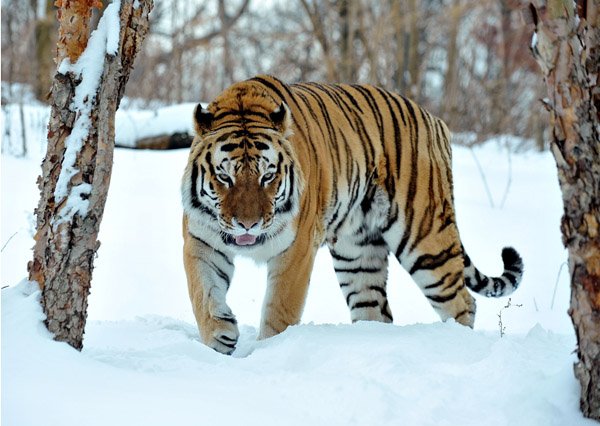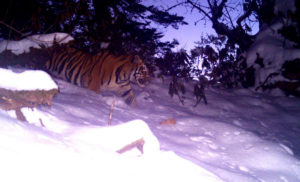In a significant development for conservationists in India, a three-year survey in Arunachal Pradesh’s Dibang Valley Wildlife Sanctuary has found photographic evidence of tigers residing 3630 metres above sea level in snow-clad peaks of the Eastern Himalayas, according to Times of India.
From 2015 to 2017, researchers at the Wildlife Institute of India (WII) conducted what is known as a ‘camera trap study’ to capture the presence of these wild cats in India’s highest reaches for possibly the first time.
However, Aisho Sharma Adhikarimayum of the WII, who conducted the study with fellow scientist GV Gopi, believes that these endangered tigers could be found at a higher elevation.
“In the highest altitudes, two male tigers were captured at 3,246m and 3,630m. The latter elevation is the highest photographic evidence of tiger presence in the Indian part of the Eastern Himalayas,” Gopi told The Indian Express (TIE).
It was back in 2012 when researchers spotted an endangered snow tiger at an elevation of 4,200 metres above sea level (asl) in Bhutan. There is an excellent chance of finding these tigers beyond the 4000-metre asl-level in the Dibang Valley, say researchers to the Times of India.
There were reports that these endangered snow tigers were seen at altitudes above 4,000 meters in Uttarakhand, but there is no real evidence to corroborate it.
“In January 2014, our camera trap captured a partial image of [a] tiger,” said Gopi to TIE, adding that, “The chief takeaway from the survey was that the Dibang Wildlife Sanctuary, in which the Mishmi Hills are located, holds one of the highest ranges for the tigers in the country.”
These findings, published in the Journal of Threatened Taxa on November 26, are important for conservationists because it gives them a clearer picture about the areas inhabited by tigers, allowing them to take effective measures in the future.
Covering across 336 square km of the wildlife sanctuary’s 4,149 square km area of the Dibang Wildlife Sanctuary, this camera trap survey not only captured the presence of tigers at 3630 metres asl, but also found 11 individual tigers and two cubs.
Not known for occupying high altitudes, these sightings of tigers are rare. However, as Adhikarimayum argues, this isn’t about altitude as much about the terrain these tigers occupy. “Our study has revealed the first photographic evidence of tigers in the snow, after Russia’s Amur tigers,” he told The Indian Express.
Source: The Better India
Image Courtesy: Photo by Julie Larsen Mahe
You may also like
-
New Heat-Based Approach To Cancer Treatment Can Reduce Chemotherapy Doses
-
Scientists Take A Major Step Towards Unification Of Classical & Quantum Gravity
-
India Graphene Engineering and Innovation Centre (IGEIC) Under the Vision of Viksit Bharat@2047 Launched
-
New High-Performance Gas Sensor can Monitor Low Level Nitrogen Oxides Pollution
-
Antidepressant Drug can be Repurposed for Treating Breast Cancer

